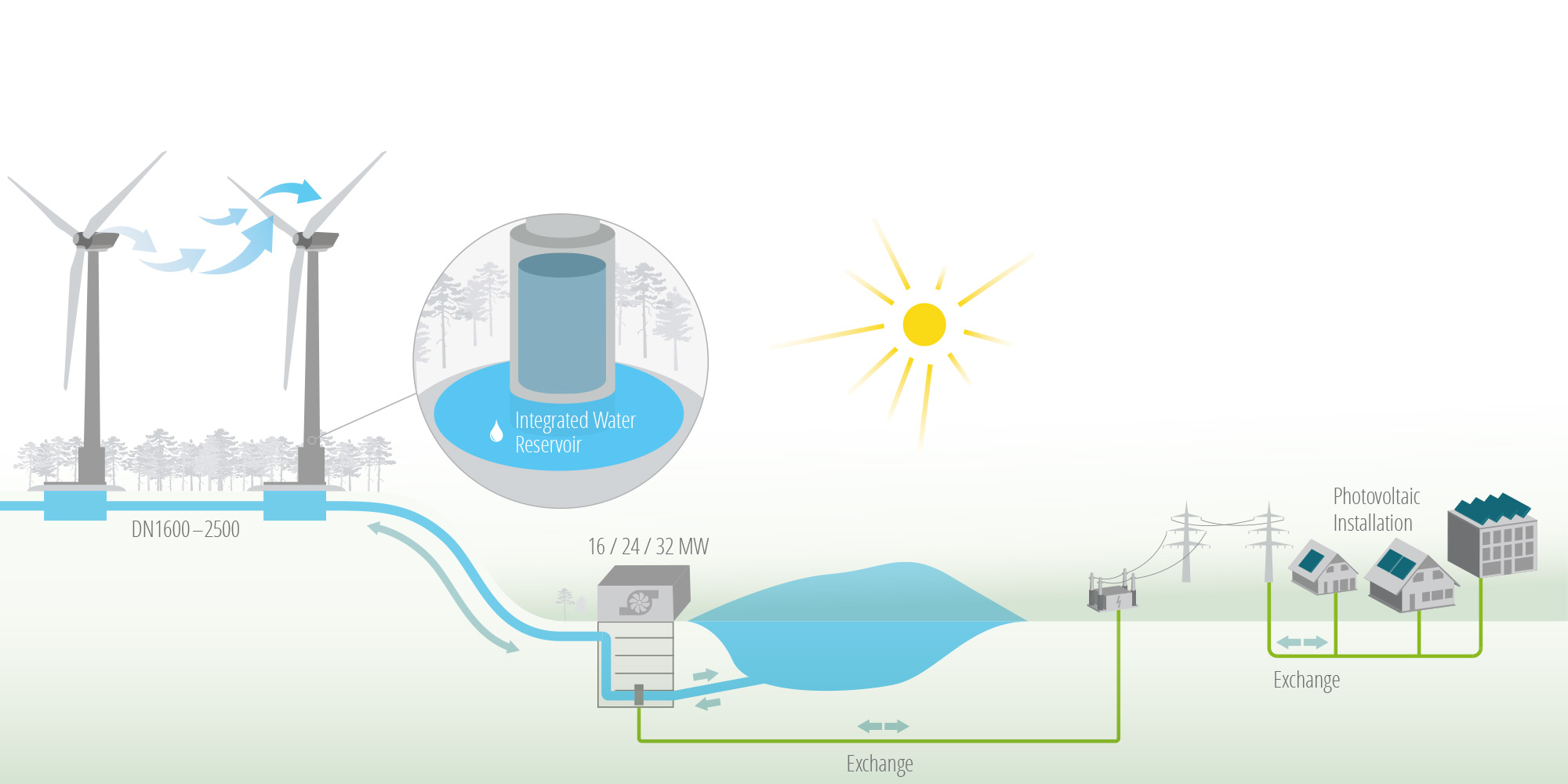Did you ever think at the amount of empty, unused space in the bottom of a wind turbine? Any idea how to use it?
Well, the folks at Max Bögl (a German conglomerate active in several sectors) have decided that it could be a good idea to fill it with water (about 40.000 m3 per turbine, up to a height of 40 meters) and use it as a temporary energy storage, in what they call a “water battery”.
Basically, the idea is to use a pumping system to fill the bottom of the tower when energy consumption is low and production is high (for instance, during a windy night).
When needed, the water can be released opening a valve and, thanks to a network of pipes with a diameter of over 1 meter, it can be used to produce energy through three Francis turbine, with a total nominal power of around 16 MW.
The hydro electrical plant is relatively near, at a distance of around 3 Km and with a height difference of 200 meters.
The turbines installed are 4× 3,4 MW GE 137 on an hybrid Max Bögl tower. What is remarkable is the hub height, varying from 155 to a record 178 m. They claim this to be the highest onshore turbine tower currently in operation, and as far as I know with a tip height of 246.5 metres, this could easily be true.
The switching time between energy storage and energy production is not exceptionally fast (30 seconds) but is not outrageously long either.
Partially founded by the German Environmental ministry with over 7 mln. € the pilot project is currently being built in Gaildorf (southern Germany).
Among the benefits of this solution is noteworthy the high efficiency of conversion of the potential energy of the water into electricity using well-known, proven technologies.
The main issue that I see is that this system, to be implemented, need a hydro electrical plant nearby with his own “long term water storage basin”. Essentially the wind turbines are providing only an additional (and somehow limited) storage capacity. However, in order to be cost effective, this technology will also need a “standard” basin.


Leave a Reply